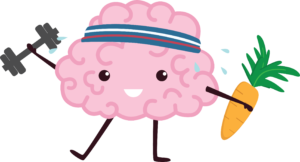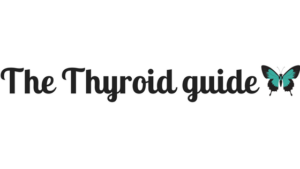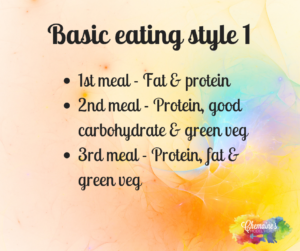Hello! I hope your keeping super well and ready to get through this last week and put the finishing touches on your new ‘normal’ for supporting your Thyroid!
So far we have looked at;
- what is the thyroid
- how can you tell if you have a thyroid issue
- what tests should you be asking for
- what number ranges should you be looking at for optimal thyroid health
- how to start supporting your thyroid through nutrition
- thyroid supporting supplementation
- exercise do’s and don’ts for thyroid health
- important organs and functions that need to be taken care of for good thyroid health
- taking time to take care of yourself ‘self care’
Next we are going to cover ‘getting better and continuing on your thyroid journey’, a small bonus section on ‘fat loss with a thyroid condition’ and ‘monitoring your thyroid’. Sound good?
 If there is anything you would like to see me address or add to this guide or into the thyroid guide Facebook group – don’t hesitate to let me know 🙂 .
If there is anything you would like to see me address or add to this guide or into the thyroid guide Facebook group – don’t hesitate to let me know 🙂 .
Module 4
Getting better and continuing on your thyroid journey
At the end of week 3 we discussed how for some they can heal in as little as a few weeks and for others it might take a few months or years…it takes time to build up illness so takes time to undo it. So stay patient and stay the course. This is not a race but a lifetime journey.
It can be hard to keep a positive attitude all the time or hold onto hope, and keep negative thoughts at bay… I get that but as we learned in week 3 under the stress section…its important. Pace yourself, take deep breaths and stay positive. You have a long road ahead, it will get bumpy at times but it will be worth it when you reach your destination! Never give up!
Every day, in every way, I am getting better and better. – Emile Coue
You will need to keep referring back to this guide, go back over your notes until you have the hang of things and what makes you feel good while yielding positive biomarkers {Biomarkers are signs, signals and improvements in your health that show us you are on the right track and making progression}. Journaling, testing and tracking your routines, food, sleep, stress triggers etc, as well as other things you are undergoing, can help you keep track of your progress and biomarkers.
The approach to healing is based on; diet/nutrition, supplements, lifestyle changes and medication where necessary.
Keep your focus on;
- eliminating or manage as best as possible, thyroid and stress triggers
- get on top of nutrient depletion’s and then maintain them
- support your gut and microbiome (your microbiome is all the bacteria in and around your body) – modbiotic foods should become a staple in your life
- support your other organs daily
- watch for flare ups or negative biomarkers then reflect on what could be causing them
- have a good support team – make sure you have a good doctor that you are comfortable with and that listens to you
- consider making one or more of the following part of your health care team; chiropractor, naturopath, nutritionist or nutritional therapist, acupuncturist, herbalist, compounding or integrative pharmacist, integrative health practitioner, biohacker 😉
- Download, print and save this PDF for your referral The 5 R’s of Recovery
No doubt some of you are saying “so what should my diet or eating style look like going forward? Especially if I want fat loss?”
Well firstly we have learned in week 2 and 3 what are the best foods for thyroid health, and these should become a staple in your diet from now on. Also what should be avoided! I have uploaded the Modbiotics food list, the autoimmune foods list PDF, the meal/Chemaine’s Model Health Eating Plan and the smoothies PDF to the Facebook group, in the files section. The meal map is going to be the best place for you to start – that whole PDF will give you great direction and you can ask questions in the group.
Nutrition is the only science in which multiple answers can be both correct and wrong. In other words, one mans medicine can be another mans poison. But for the majority of people we see the below eating style works very well ![]()
For some people it may be as easy as eliminating gluten and dairy for them to feel better and see improvements in body composition…others may require other lifestyle changes like increased exercise, better sleep habits, interventions for infections or bacteria overgrowth, balancing blood sugars, and practicing stress management. We are all different and although we may all feel better changing one thing, most of us will need to change a little bit more.
Multiple eating styles have been shown to improve thyroid dysfunction like a Gluten Free diet, Specific carbohydrate diet, Feingold diet, GAPS diet, Paleo, autoimmune Paleo, low FODMAPS, dairy free adn elemental diet. But again the meal map PDF and food list combined with the basic eating style above is a very good place to start 🙂
The connection between all these eating styles or diets is that they all remove highly processed inflammatory reactive junk foods! Most of them include animal proteins, good fats, nutritious fruits and vegetables, fermented foods and gelatins/collagens/broths. And while its hard to say which will work best for you, generally those with a history of gut issues, antibiotic and oral contraceptive use, obesity issues, will require a bit more time for healing. Play around with the different diets while still remembering the recommendations in this guide and you will find what approach works for you.
The principles of a healing dietary protocol are;
- take the persons individuality into account including likes and dislikes
- remove trigger and health damaging foods (again…grains, gluten, trans fats, dairy, soy, simple sugars etc)
- add healing foods
- replenish nutrients and stay on top of them
Side note; I have not mentioned fasting or refeeding/cheat meals because that would be recommended on an individual basis…good for some but not for others. Message me if you would like to discuss this more.
FOR FAT LOSS
I know many of you have been waiting for this and I must mention that fat loss with slow thyroid can be a tricky area but with consistency it can be done. First you need to understand that quantity AND quality both have their place. It is generally recognized that to lose fat one must spend more calories during the day than they take in….this is true. But we also recognize that a calorie is not just a calorie and calories from different foods get broken down and absorbed or not absorbed differently. How food is prepared, served and food timing also effects fat loss. But simply put, this is the basic recommendation you would follow for fat loss ‘while’ healing your thyroid;
- Figure out your basic calorie requirement. We multiply the body weight you would like to be in pounds by 10 and that’s your ‘basic’ calorie allotment for the day. Every once in a while it is wise to have a day or two where you increase your calories to 1.5 or 2 times what they generally are.
- Focus on quality! So work off the recommendations in module 2, plus the PDFs and the basic eating style.
- Balance blood sugars and insulin…honestly the basic eating style will help with this. And if you find you are going hypoglycemic or getting dizzy or crashing, message me and I will take a look.
- Aim to walk for 40-60 minutes after dinner, at the very least 5 days a week, preferably outdoors.
- Avoid snacking in the evenings.
- Aim for 3-4 liters of water a day (some of you may need more).
- Sleep!!!
- Track. Don’t try kid yourself…the most successful people in the world track. If you don’t keep an eye on what you are putting in your mouth then you are just kidding yourself! Check out Cronometer, I love them, they have a free app and the creators are Irish 😉
- Take 1 tablespoon of apple cider vinegar 2-3 times a day
- And lastly……have fun and laugh as much as possible, life isn’t that bad!xo
Monitoring your thyroid
Going forward you want to keep an eye on your biomarkers, not just for progress but for regression too. You can refer back to the list of symptoms of sluggish thyroid in module 1 and watch out for any of them…this will help you prevent or avoid doing stuff that maybe does not work for your body. I find that monitoring my body temperature daily, my hair growth/loss, nail and skin health/dryness and weight are good indicators for me. If my hair starts to fall out I know I need to take a look at my nutrition and stress and see what may be taking away from my thyroid. But that’s just me, you might notice other things like a rash inside your forearm or around your neck and clavicle, or a feeling of depression, or constant fatigue etc. So watch out for those negative biomarkers!
Keep an eye on your gut and bowel movements – they are one of the first signs that something is not right in your body!
THYROID AND TEMPERATURE
Thyroid hormones govern your body temperature by signaling fat burning and generating heat inside the cell. You can measure your basal body temperature to see where you currently sit and monitor changes as you use nutrition and lifestyle changes to maximize your resting metabolic rate.
Basal Body temperature should be taken first thing in the morning, upon waking and preferably before you get out of bed. Place thermometer in the same place and time every day. E.g. under your armpit, relax and try to remain as still as possible. *Try to measure your temperature at the same time on consecutive days.
Women should try to measure temperature away from time of ovulation (from days 2 to day 9 of their menstrual cycle) for most accurate basal body temperature measurement as this can increase BMR.
We like our temperature to be sitting around 36.8 degrees Celsius to show metabolism and Thyroid are ticking along nicely. I am happy with a BMR range of 36.4-36.8…but the closer you are to 36.8 the higher your metabolism. Here is the Monitoring your temperature PDF for an easy visual aid that you can save to your phone or laptop . This is a great video for tracking temperature and metabolism.
You should also be getting your thyroid tested by your health practitioner 2-3 times a year so make sure you schedule that in and always ask for a copy of your results!
And that’s a wrap!
I hope you enjoyed this guide and feel confident that you have learned enough to start turning your thyroid health around and maybe lose a little fat while you are at it 😉 . As I continue to learn and come across new research regarding the thyroid, I will be sure to add it in here and also post in the Facebook group. Remember, to please let me know if there is anything you would like to see me add or cover.
I really DO hope you found this guide comprehensive and would feel happy recommending to others you feel would benefit from it 🙂 .
Lots of love and long lasting health!



